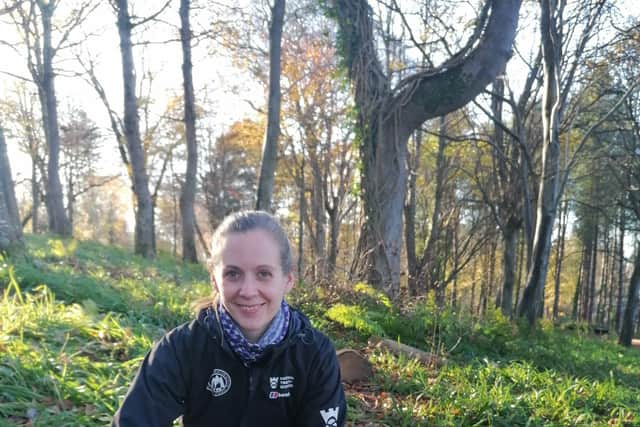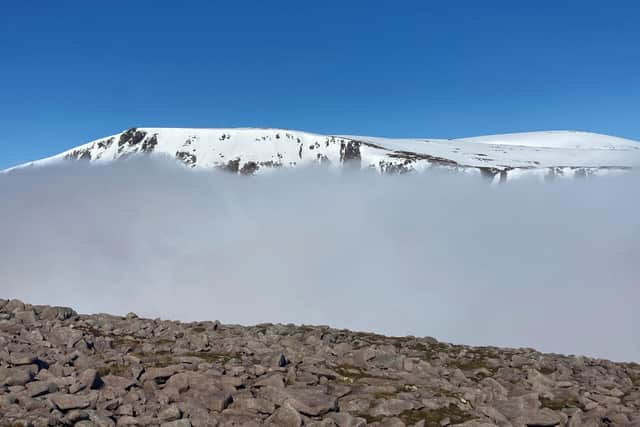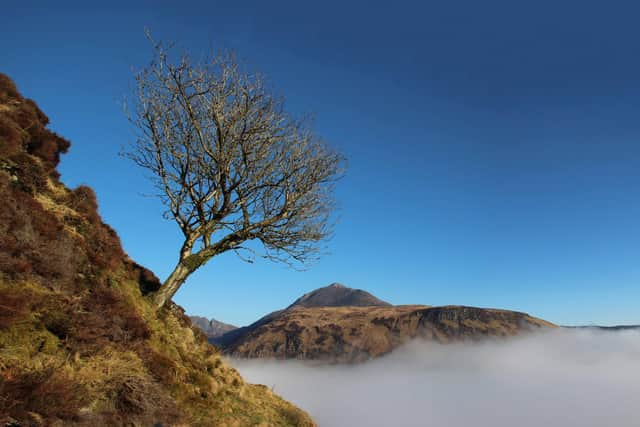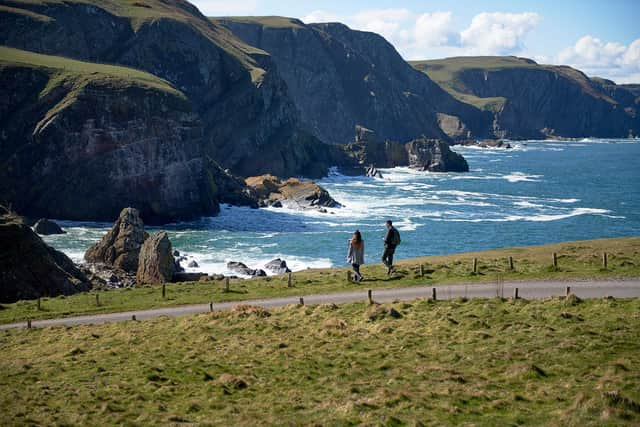Scotland's hidden treasures: Ancient rocks, daredevil wildlife and magnificent mountains
To mark World Ranger Day today we asked the people who spend their lives caring for some of our best known historical landmarks and beauty spots to reveal their favourite hidden gems and natural wonders.
The rangers, who work at various sites managed by the National Trust for Scotland have picked out a variety of treasures, but all agree on one thing – they love working in Scotland’s great outdoors.
A baptism of fire


Advertisement
Hide AdAdvertisement
Hide AdCiaran Hatsell, ranger at St Abb’s Head in the Scottish Borders, said: “This wee reserve is very special. One of the best things is its variety and seasonality.
“In the summer there are cliffs jam-packed with seabirds – 42,000 guillemots pressed shoulder to shoulder on precarious ledges, the raucous cries of kittiwakes ringing around the volcanic cliffs and caves and gannets muscling in on the action, jostling with and outcompeting the other seabirds for prime nest sites.
“One of the most amazing natural wonders occurs in late June.
“Out on the cliffs on calm summer evenings the volume gets ramped up to full.


“Tiny guillemot chicks as young as 15 days old are preparing to take a leap of faith off the cliffs into the briny depths below – they can’t fly yet, having tiny wings, so they bounce and drop straight into the sea.
“The atmosphere is electric.
“The chicks make a piercing high-pitched whistle, while the adults jibber-jabber, encouraging them down to the sea below.
“They eventually pluck up the courage to jump, all the while keeping an eye out for predatory gulls patrolling, looking for an easy snack.


“Once they reach the safety of the water, they can dive below the waves instantly, giving them a quick exit route away from any would-be predators.
“Nature really is astonishing.
Advertisement
Hide AdAdvertisement
Hide Ad“The adult males will then swim them out to sea where they’ll learn to catch fish, grow their wings and begin to mature.
“What a baptism of fire.”


The Ayrshire coastline
Michelle Shepherd, ranger at Culzean Castle and Country Park in Ayrshire, said: “At Culzean we have three miles of beautiful coastline which is an officially designated Site of Special Scientific Interest because of the ash woodland, shingle beaches and geological features there.
“This stretch of coast is a personal highlight of mine, partly because I studied geography at university.
“I love the fact that the cliffs we see are 380 million years old and that people walk past them every day not knowing how old they are.
“You find a huge variety of pebbles, rocks, agates and even semi-precious stones like jasper, and the coast has sandy beaches, dunes, caves, volcanic and sandstone cliffs, and lots of secluded bays that you can only reach when the tide is out.
“It’s home to such a variety of wildlife. We have 20 pairs of fulmars nesting in the cliffs below the castle, common and grey seals, dolphins, porpoises and basking sharks.


“And the views are incredible. We look out to Arran, Mull of Kintyre and, on a good day, can see the tip of Northern Ireland.
“Sunsets are phenomenal. As the year progresses the sun moves, setting over the water, then over Arran and, in August and September, over Goatfell.
Advertisement
Hide AdAdvertisement
Hide Ad“And every season offers something different, from beautiful sunny days where the sea is so still that it looks like a pool, to winter where the waves are crashing off the cliff face.”
Above the clouds
Paul Bolton, head ranger at Mar Lodge Estate in Aberdeenshire, said: “My favourite natural wonder is when you emerge from a cloud inversion into the bright blue sky above.
“You could have walked through mist all morning, barely been able to see in front of you, and then you step out into this amazing bright blue scene above the clouds.
“Hilltops poke out through the cloud here and there and you really do feel as though you are on the top of the world.
“There is a sense of excitement as you approach the top and the cloud is starting to thin slightly, and you hope you will emerge above it.
“The fact you never know for definite when or if it might happen adds to the sheer enjoyment when you do experience it.
“It’s days like this, when you are out working and then something like this occurs, that just make you stop and take it all in.
“You really appreciate where you work and how lucky you are to experience these things.”
Glen Rosa in all its glory
Advertisement
Hide AdAdvertisement
Hide AdKate Sampson, head ranger for the Isle of Arran, said: “If you take a stroll in Glen Rosa this week your senses are bombarded by the smell of the bell heather in full bloom, the sight of the mountains glimmering in the heat haze above you and the buzz of a golden-ringed dragonfly as it hunts along the edge of the path.
“But why I really love Glen Rosa is that next week it will be so different.
“Refreshing rain will release the scent of the bog myrtle, Scotch Argus butterflies will be on the wing and there may be a chance of seeing a juvenile golden eagle taking its first flight.
“One of my challenges is to take care of special places like Glen Rosa.
“People have been changing the glen since the Bronze Age, when Arran was hub of human activity.
“In the past 3,500 years there have been many changes to the management of the glen – the footprints still visible from sheiling sites where cows and sheep were grazed in the summer months, to old sheep handling pens where 1,000 of sheep were dip-treated and shorn, then released back onto the hill.
“This human activity led to a loss of woodland with only a few survivor trees clinging on in steep gullies where deer and sheep couldn't reach.
“Now my job has been to help reverse this woodland loss.
“We have already planted over 40,000 trees, including the endemic Arran Whitebeams – some of the rarest trees in the world.
Advertisement
Hide AdAdvertisement
Hide Ad“We’re already seeing an increase in biodiversity and as the trees grow they will help absorb carbon dioxide from the atmosphere, in a small way assisting with our goal of combating climate change.”
The National Trust for Scotland is urging visitors to “love this place, leave no trace” as it seeks to encourage people to behave responsibly and clear up after themselves when enjoying the outdoors to minimise their impact on communities, landscapes and wildlife.
Comments
Want to join the conversation? Please or to comment on this article.